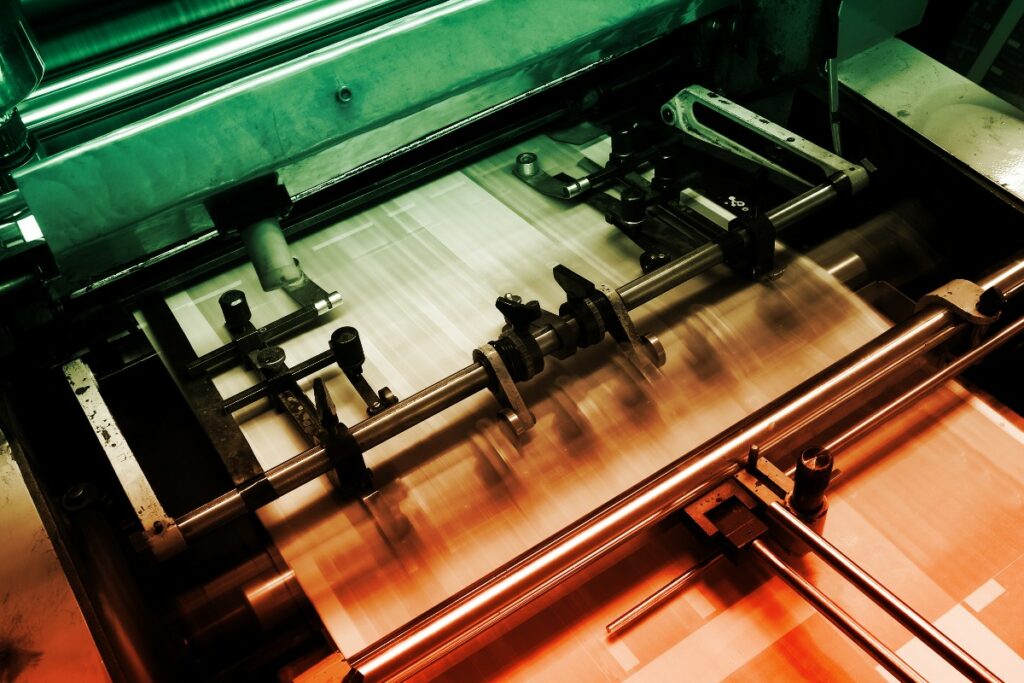
Is Printing a Dying Industry?
The print industry has been around for centuries. From more traditional types, such as newspapers and magazines, to marketing-focused media, such as leaflets and brochures, print has helped shape our modern way of life. As digital technologies have become more prevalent, however, printed media has lost some of its luster. But is the printing industry really dying? Here’s what you should know.
What Exactly Is the Printing Industry?
Businesses in the printing industry primarily print on paper, metal, textile products, plastic, glass and other materials, excluding fabric. Industry operators tend to engage in an array of printing processes including gravure, lithographic, screen, digital, flexographic and letterpress.
Despite what many think, the industry doesn’t really include publishers that perform printing, nor businesses that perform postpress or prepress services without traditional printing.
When we refer to the printing industry, we are mainly referring to businesses that engage in a few primary activities including:
- Commercial lithographic printing
- Commercial flexographic printing
- Commercial gravure printing
- Commercial screen printing
- Digital printing
- Quick printing
- Book printing
- Manifold business forms printing
- Loose-leaf binders, blank book, and devices manufacturing
What Is the Outlook?
 In the coming decades, the printing industry is predicted to struggle as digital media continues to replace traditional paper products. As a result, experts forecast a decline in industry revenue. Profit growth is likely to remain slow thanks to sluggish demand, which has led to substantial price-based competition and excess capacity within the industry.
In the coming decades, the printing industry is predicted to struggle as digital media continues to replace traditional paper products. As a result, experts forecast a decline in industry revenue. Profit growth is likely to remain slow thanks to sluggish demand, which has led to substantial price-based competition and excess capacity within the industry.
Employment in printing and many related support activities has also been declining since the late 1990s. Digital technology advances have contributed to this decline in two key ways. First, by altering the marketplace as options to deliver data and information become more diverse. And secondly, by enhancing productivity so the industry requires fewer workers to do the exact same amount of work.
But does this mean the industry is actually dying? While it will never be the economic juggernaut it once was, there will always be a place for printed products. Likewise, while employment in the printing industry has been in decline for more than a decade, it remains an important industry for countless workers throughout the world.
Still a Demand
While they have countless uses, the primary determinant behind the demand for commercial printers is how often downstream advertisers use print media in their marketing campaigns. Each year, roughly half a trillion dollars is spent by companies on paid media. A considerable portion of that is spent on digital marketing, while only around 10% is spent on global print advertising. Again, though, while this may sound dismal, it doesn’t necessarily point toward the death of an industry.
Ten percent of half a trillion dollars is $50 billion, a considerable sum of money that’s a long way from zero, which is the equivalent of ‘dying out’ levels. This spending shows that there are plenty of advertisers (and consumers) who still believe in the proven value of print. In fact, 90% of U.S. adults still read printed magazines. But it’s not just advertisers; according to recent surveys, nearly 90% of adults continue to read print magazines on a daily basis.
But with the instant convenience of digital media, why would people prefer printed content? While you can’t discount the romantic human element of preferring to hold an article of information in your hands; there are also deep-rooted psychological elements at play.
Print media tends to be viewed as more trustworthy. Much of this credibility stems from an innate favorable impression created by the very nature of the printed word. Likewise, print media tends to enjoy a “halo effect,” which refers to the spillover prestige enjoyed by the publication in which a print ad appears. Print media also tends to have higher recall values than digital ads, while also avoiding the stigma of “interruption marketing.”
With all this in mind, it’s clear that, while it’s no longer the juggernaut it once was, the print industry still has a big place in the modern world. At the same time, forward-thinking companies need to embrace the future by integrating digital and print strategies together to form a complete, cohesive plan that allows them to reach their goals. Fisher’s Technology can help you achieve this delicate balance.
Our experts provide state-of-the-art printing technologies, while also managing servers, mobile applications, mobile devices, computers, network equipment and cloud environments. We can provide dedicated print management services, while also shielding your company from malware, hackers and ransomware. Fisher’s Technology can also enhance your operational efficiencies with innovative workflow solutions including electronic document automation. Contact our experts to learn more.
